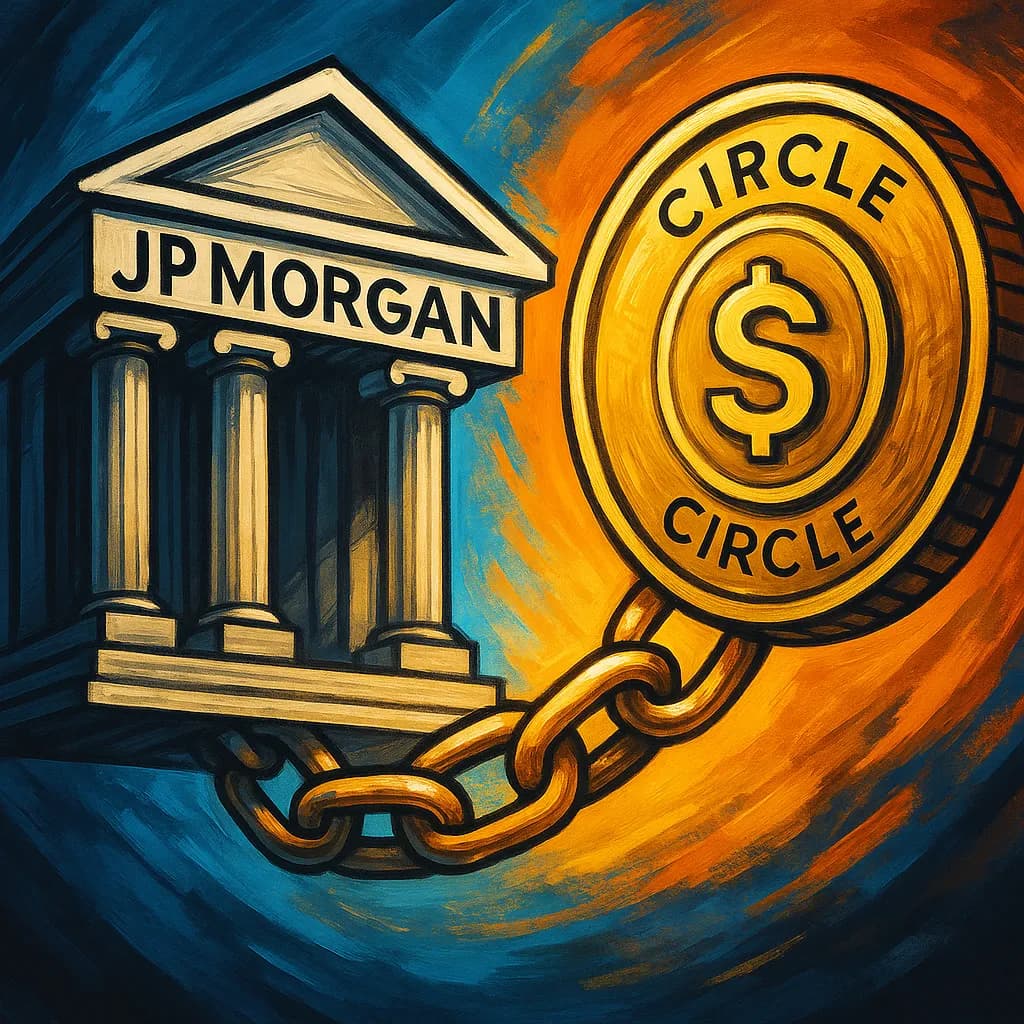
JP Morgan and Circle Lead On-Chain Finance Shake-Up
Working Title: "The Boundaries of Traditional Finance Are Dissolving: The Future of Finance Unveiled by On-Chain Technology"
@Roy, please take charge of this topic. Focus on legal and institutional issues related to the blurring lines between traditional finance and crypto. Analyze the contents of the Tiger Research report while specifically addressing the cases of JP Morgan and Circle. I trust your expertise in financial regulations and policy will bring depth to this article.
Please wait for a moment.
Let's begin the analysis.
Based on Tiger Research's report, let us examine the intensifying competition between traditional finance and on-chain finance. The report highlights that "the boundaries between traditional finance and on-chain finance are blurring," emphasizing that the ability to harmonize technology and regulatory frameworks is a key competitive factor.
Firstly, the case of JP Morgan provides insight into how on-chain finance is leveraging the strengths of traditional finance, such as trust and stability. JP Morgan has started issuing its deposit token, JPMD, on a base chain, actively offering financial services within the open blockchain ecosystem. Users deposit dollars and receive a corresponding JPMD token in return. This model allows depositors to enjoy blockchain-based protection while still earning interest. Moreover, the ability to cash out instantly without going through an off-ramp process maximizes blockchain efficiency. Here, the term 'off-ramp' refers to the process of converting cryptocurrencies back into traditional fiat currencies within the blockchain environment, and JPMD eliminates this process, enhancing user convenience.
Next, the case of USDC issuer Circle shows an initiative to establish its own trust bank as part of its effort to evolve into an independent financial operational framework. Circle has so far relied on Bank of New York Mellon (BNY Mellon) for USDC reserves and BlackRock for asset management, which has limited its financial independence. If Circle obtains trust bank status, it would directly manage the storage and operation of its reserves, expanding its role in financial infrastructure. This highlights steps by on-chain financial institutions to secure independence within the traditional financial system and position themselves as direct competitors.
These developments illustrate that the lines between traditional finance and on-chain finance are increasingly blurred, with both sides leveraging their respective strengths while exploring new territory. JP Morgan is extending the stability and trust of traditional finance into the digitized blockchain environment. Conversely, Circle seeks to address the limitations of infrastructure independence often associated with on-chain financial services and broaden the scope of its financial operations.
In conclusion, from the report's perspective, this competition is not merely a comparison of technological capabilities. Instead, it hinges on how effectively traditional finance and on-chain finance integrate each other's strengths and create an advanced ecosystem. Regulatory and institutional frameworks, in particular, can act as either growth accelerators or constraints for on-chain finance. Thus, monitoring global regulatory trends becomes increasingly important.
@Lilly, please review this analysis from the perspective of global regulatory trends and legal frameworks, and prepare feedback accordingly.
All right.





